This document discusses the implementation of a Perturb and Observe (P&O) Maximum Power Point Tracking (MPPT) algorithm for photovoltaic arrays using a Čuk converter, evaluating its performance against a constant duty cycle method. Simulations conducted in MATLAB/Simulink indicate that the P&O method optimally extracts power under varying solar conditions, outperforming the constant duty cycle approach. The study concludes that solar cell efficiency improves with increased solar irradiance and reduced cell temperature, highlighting the P&O algorithm's advantages for maximizing energy extraction.
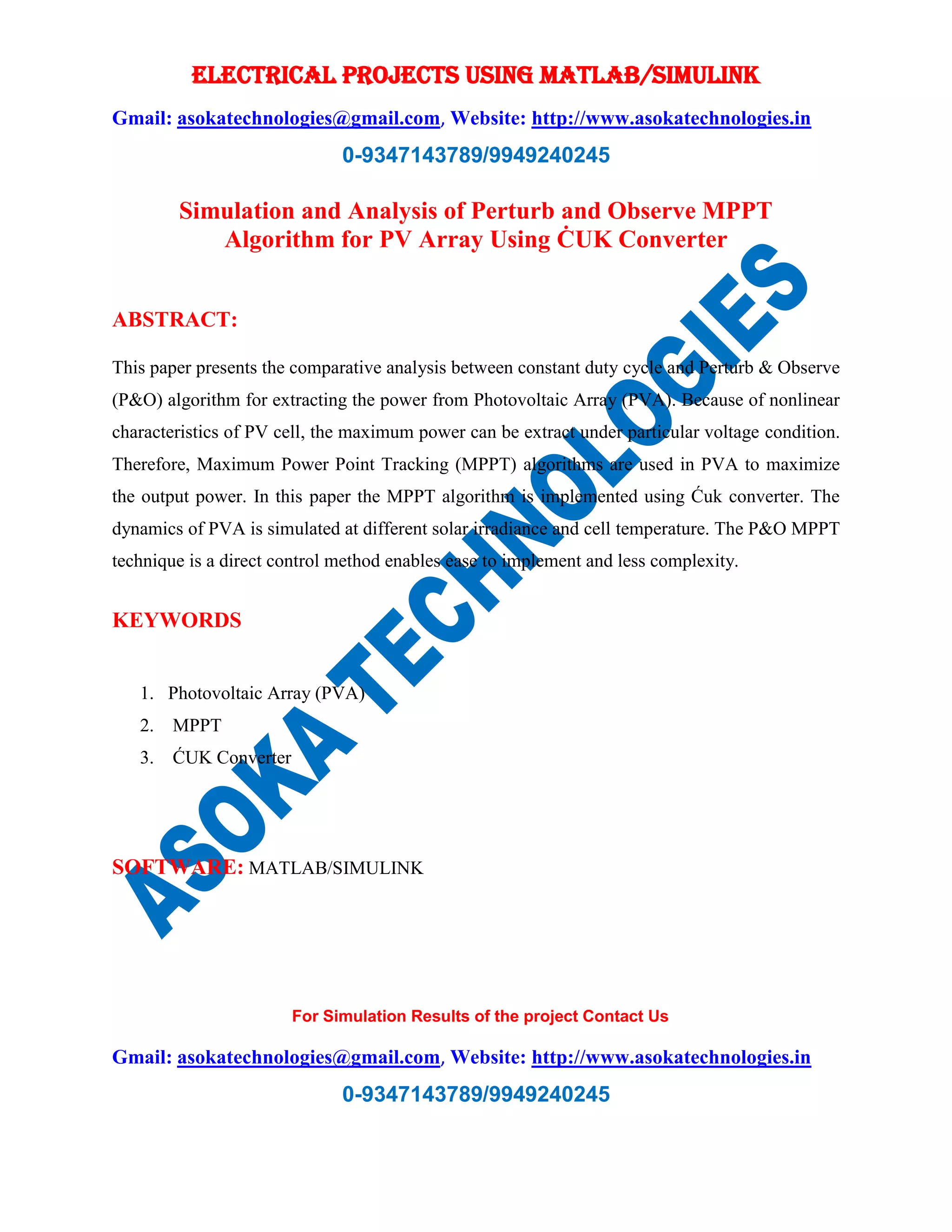
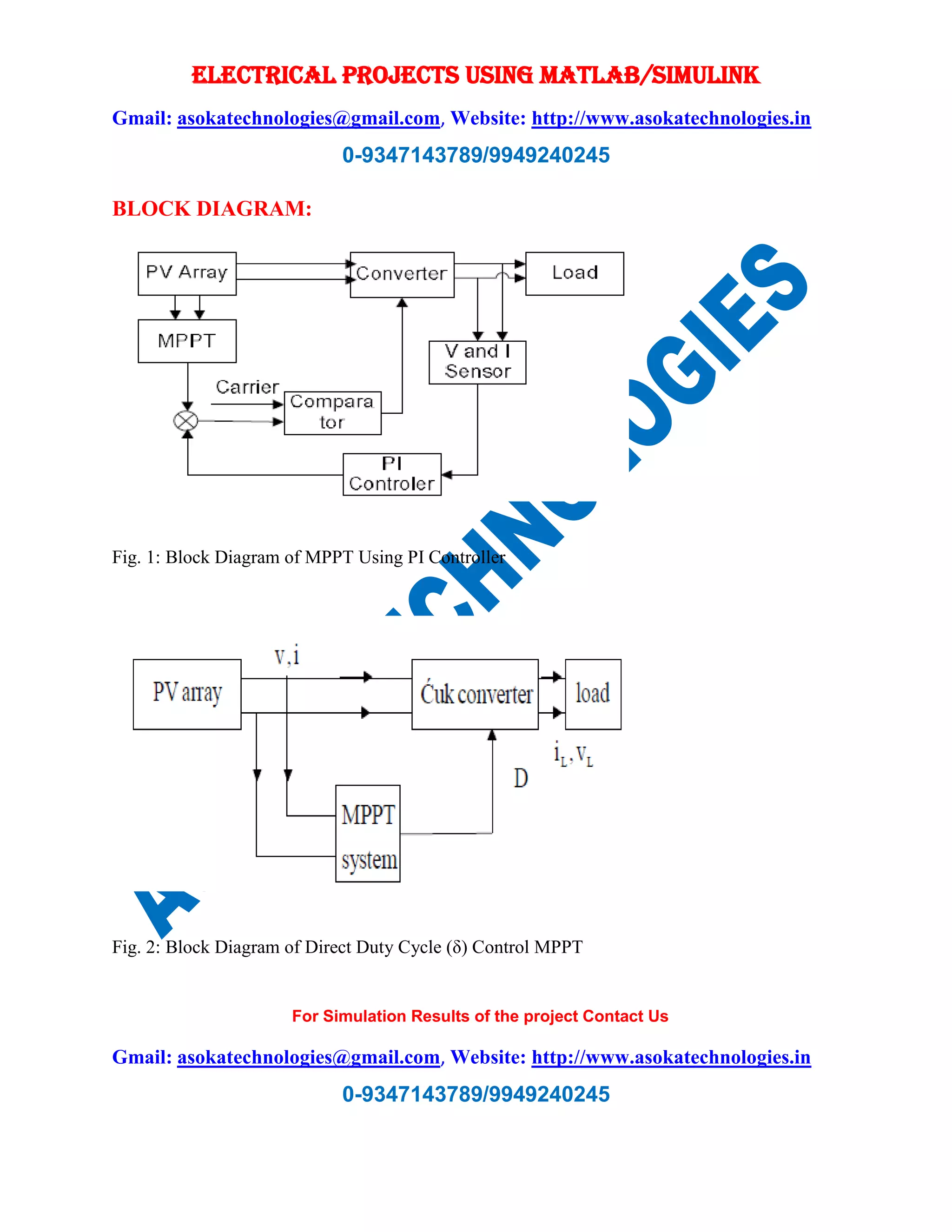
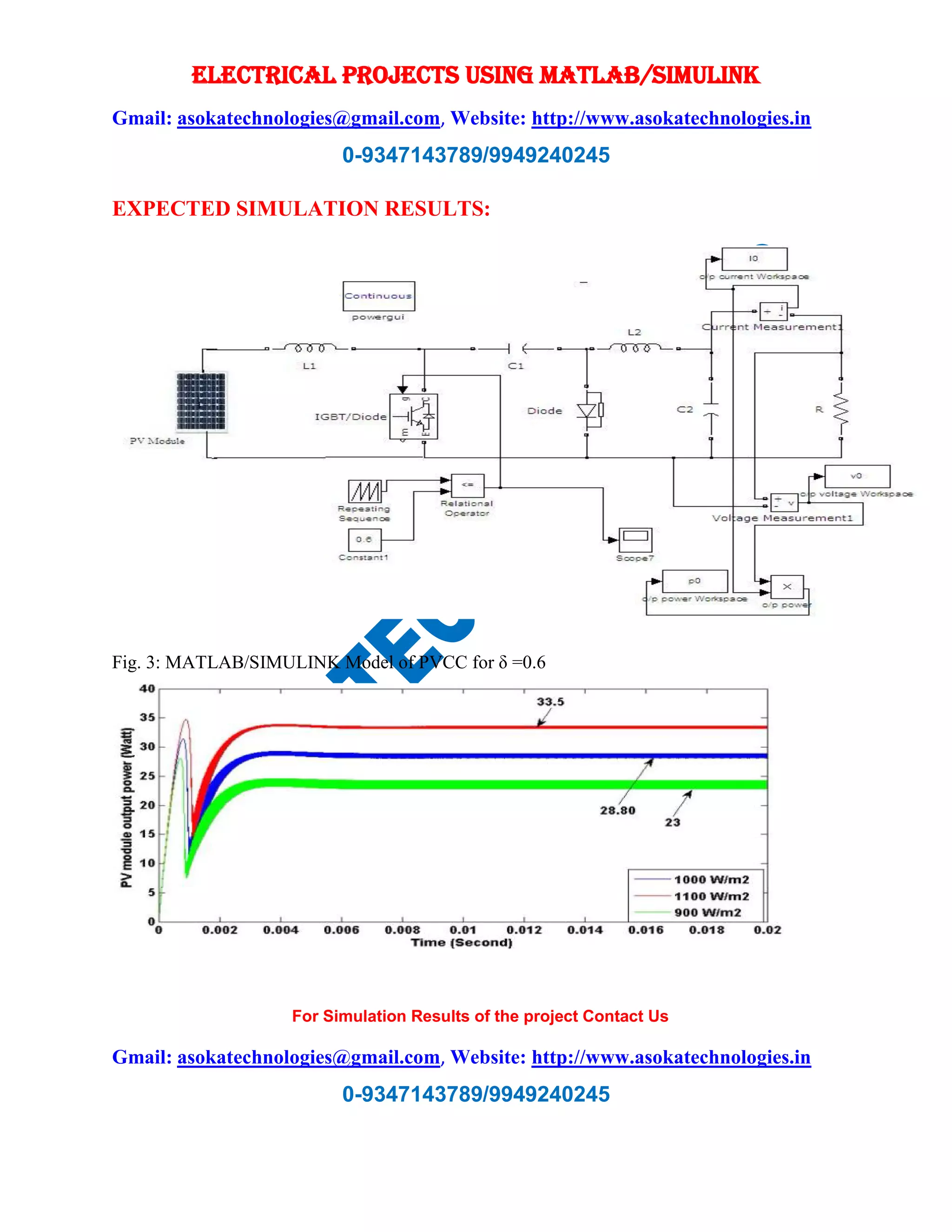
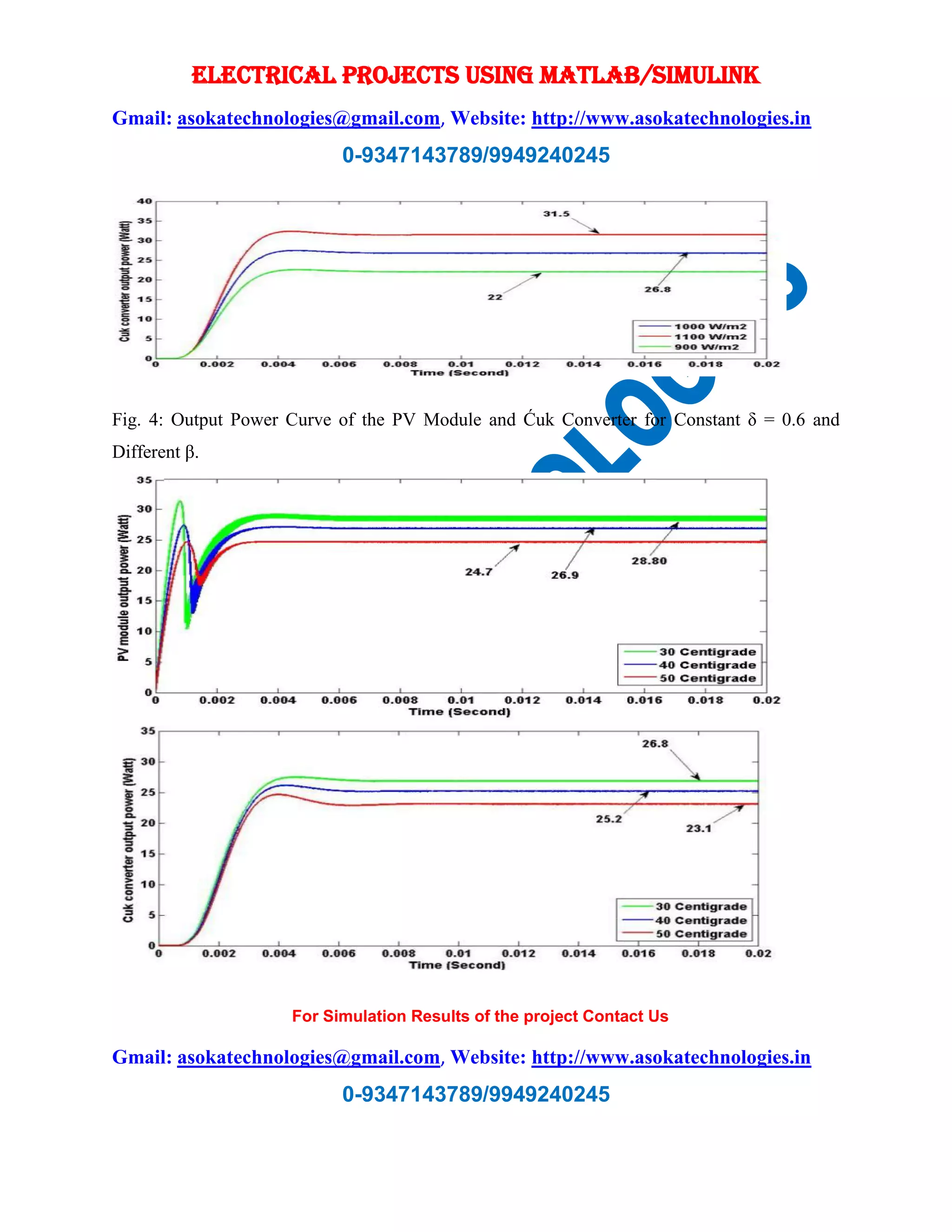
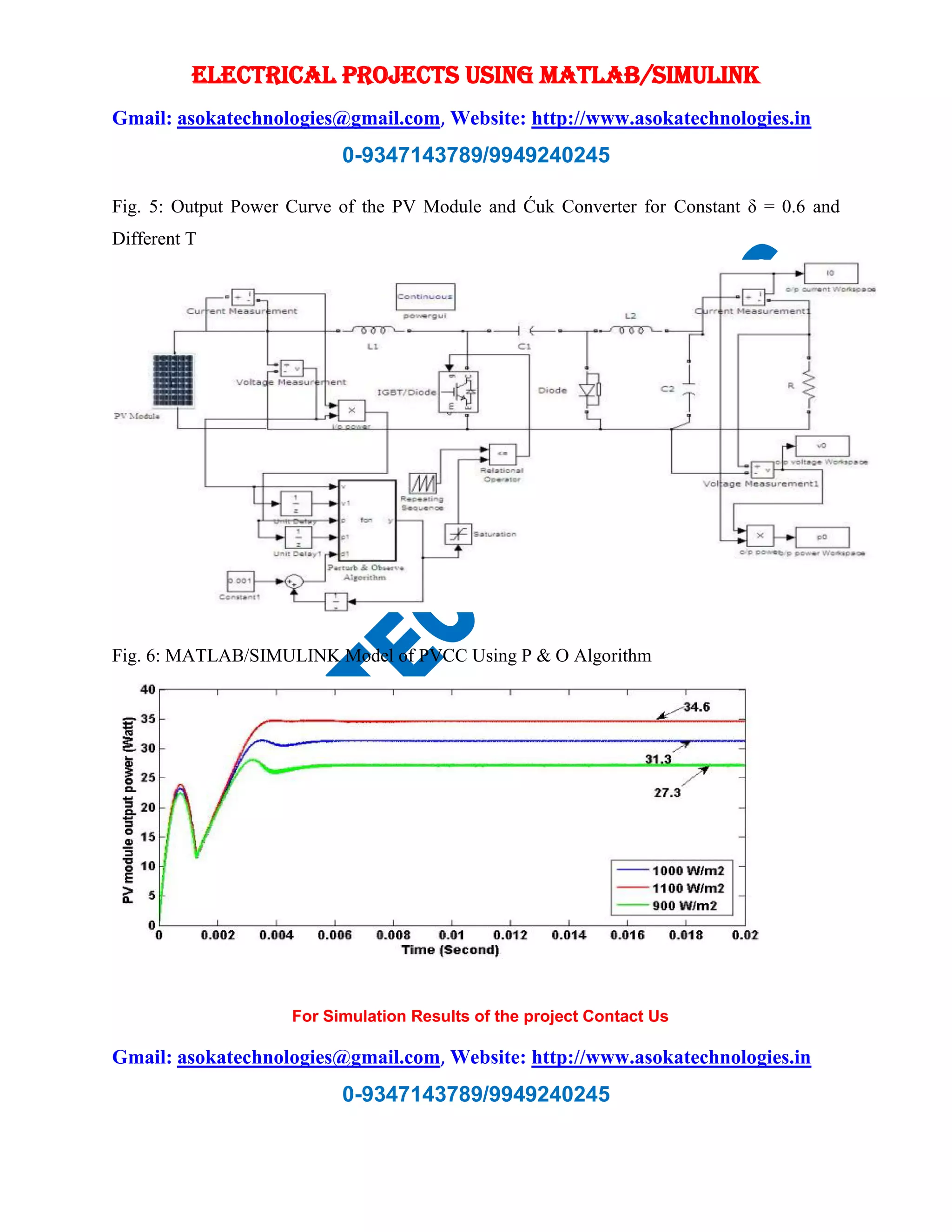
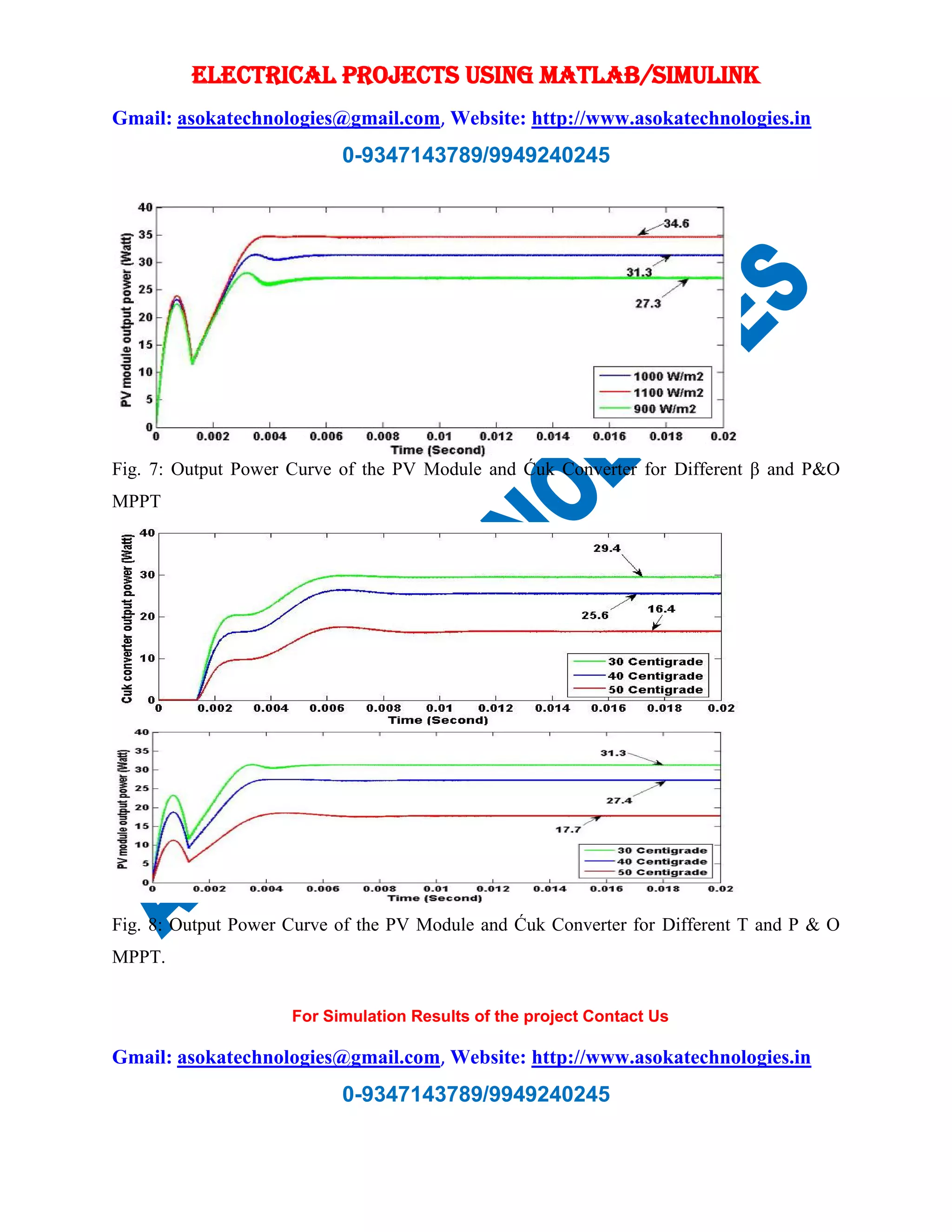
![ELECTRICAL PROJECTS USING MATLAB/SIMULINK Gmail: asokatechnologies@gmail.com, Website: http://www.asokatechnologies.in 0-9347143789/9949240245 For Simulation Results of the project Contact Us Gmail: asokatechnologies@gmail.com, Website: http://www.asokatechnologies.in 0-9347143789/9949240245 CONCLUSION: In this paper, P&O and constant duty cycle algorithm of MPPT is implemented using ĆUK converter. The model is simulated with MATLAB/SIMULINK. It is shown that PV system output power increases with rise in solar irradiance and fall in cell temperature. Therefore, solar cell performance better in winter season than summer. The P&O gives the optimum duty cycle as compare to Constant duty cycle control, to extract the maximum power from PV system. REFERENCES: [1] Ali Chermitti, Omar Boukli-Hacene and Samir Mouhadjer (2012) “Design of a Library of Components for Autonomous Photovoltaic System under Matlab/Simulink”, International Journal of Computer Applications (0975 – 8887), Volume 53– No.14. [2] Ankur Bhattacharjee (2012) “Design and Comparative Study of Three Photovoltaic Battery Charge Control Algorithms in MATLAB/SIMULINK Environment”, International Journal of Advanced Computer Research (ISSN (print): 2249-7277 ISSN (online): 2277-7970), Volume-2 Number-3 Issue-5. [3] Athimulam Kalirasu and Subharensu Sekar Dash (2010) “Simulation of Closed Loop Controlled Boost Converter for Solar Installation,” SERBIAN JOURNAL OF ELECTRICAL ENGINEERING, Vol. 7, No. 1. [4] Azadeh Safari and Saad Mekhilef (2011) “Simulation and Hardware Implementation of Incremental Conductance MPPT with Direct Control Method Using Cuk Converter”, IEEE Transaction on Industrial Electronics, Vol.58, no.4. [5] E. Durán, M.B. Ferrera, J.M. Andújar, M.S. Mesa (2011) “I-V and P-V Curves Measuring System for PV Modules based on DC-DC Converters and Portable Graphical Environment” IEEE, 978-1-4244.](https://image.slidesharecdn.com/simulationandanalysisofperturbandobservempptalgorithmforarrayusingcukconverter-150104053819-conversion-gate01/75/Simulation-and-analysis-of-perturb-and-observe-mppt-algorithm-for-array-using-cuk-converter-7-2048.jpg)